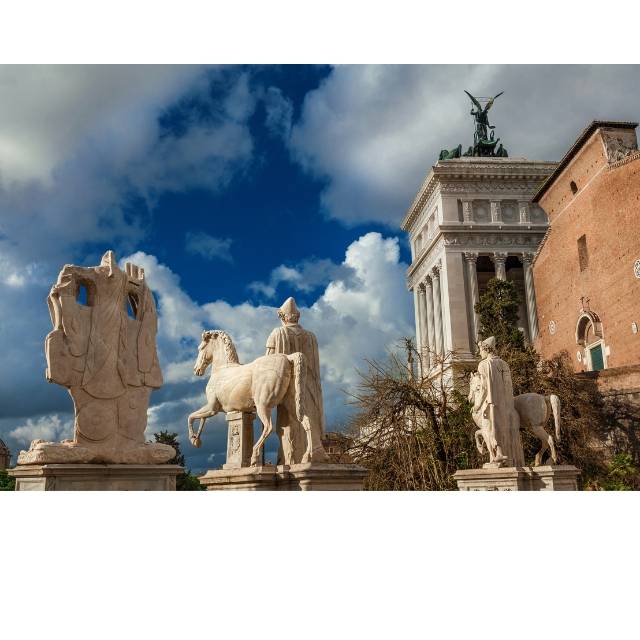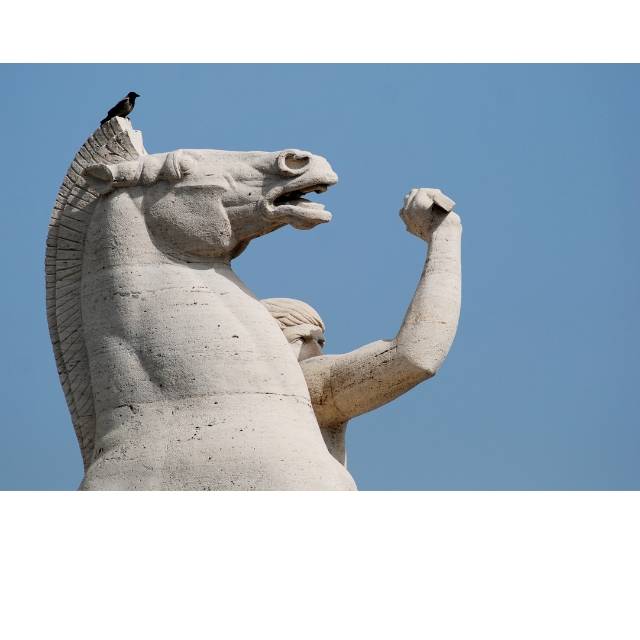Dioscuri
Introduction:
Ancient coins offer glimpses into the beliefs and legends of past civilizations. The Dioscuri—Castor and Pollux—are depicted on these coins as enduring symbols of bravery, camaraderie, devotion, horsemanship, and divine favor.
Mythical Heroes:
Castor and Pollux, the Dioscuri, were celebrated heroes in ancient Greek and Roman mythology. They represented the ideals of loyalty and courage. Their adventures and accomplishments were legendary, making them among the most beloved figures in ancient mythology. The twins were famous for their military skills, with Castor excelling in horsemanship and Pollux displaying exceptional martial skills.
Castor and Pollux were the sons of Leda and the twin brothers of Helen of Troy, Clytemnestra, and Polydeuces. Pollux was immortal, the son of Zeus, while Castor was mortal, the son of Tyndareus, the king of Sparta. This dual parentage contributed to the distinct characteristics and abilities attributed to each twin in ancient mythology.
Castor's mortal lineage and Pollux's divine heritage added complexity to their mythological stories, showcasing the fusion of mortal and immortal elements in their identities. Castor's skills in horsemanship and combat highlighted his mortal strengths, while Pollux's strength and immortality reflected his divine nature.

On Ancient Coins:
The Dioscuri's legendary status and popularity led to their depiction on numerous ancient coins. These coins often featured the twins in dynamic poses, showcasing their horsemanship skills and martial prowess. Castor and Pollux were portrayed as youthful and heroic figures, wearing their characteristic piloi (conical caps). These coins depicted scenes like the Dioscuri riding horseback wielding spears and shields. This imagery celebrated their equestrian abilities and symbolized protection and strength, making these coins a talisman of good fortune and security for their owners.
The depiction of the Dioscuri on ancient coins was multifaceted, encompassing their mythological heritage, equestrian prowess, divine partnership with horses, and cosmic connection through the Gemini constellation. These representations honored the legendary twins and conveyed powerful messages of courage, protection, and divine favor to those who used or possessed these coins. The enduring presence of the Dioscuri on ancient coins serves as a testament to their timeless appeal and the lasting impact of their mythological legacy on numismatic art and ancient cultures.
Protectors:
The Dioscuri were revered in ancient Greek and Roman mythology as protectors of several groups and aspects of life. Their protective roles were diverse and significant, reflecting their heroic and divine status.
The following are the main areas they were known to protect:
Seafarers and Sailors:
Sailors and seafarers especially venerated the Dioscuri. They were believed to offer protection against the perils of the sea, including storms and shipwrecks. Their association with the "St. Elmo's fire" phenomenon reinforced this protective role, which sailors interpreted as a sign of their divine presence and favor during storms.
Travelers:
The Dioscuri were also seen as guardians of travelers. Their presence on coins and other artifacts often symbolized safe journeys and protection against dangers encountered on the road.
Warriors and Soldiers:
Castor and Pollux were renowned for their martial prowess and were considered protectors of warriors and soldiers. Their skill in battle and horsemanship made them ideal symbols of bravery and protection in military contexts.
Oaths and Promises:
In Roman culture, the Dioscuri were invoked in oaths and as witnesses to treaties and agreements. Their role as guarantors of promises underscored their association with trustworthiness and honor.
Cities and States:
Certain cities and states revered the Dioscuri as community protectors, particularly in Sparta and Rome. They were believed to offer divine protection and favor to their followers, and their images on coins and monuments reinforced civic pride and unity.
The Dioscuri's multifaceted protective roles underscored their importance in ancient mythology and religion. Their divine assistance was sought in various aspects of life, making them central figures in the spiritual and cultural landscape of the ancient world.
Horses of the Dioscuri:
The myth of the divine horses of the Dioscuri emphasizes the significance of horses in ancient Greek and Roman culture. Horses were esteemed for their practical uses and revered as symbols of power, speed, and nobility.
The Dioscuri were known for their exceptional horsemanship, with Castor renowned as a master horseman. The twins were credited with introducing chariot racing and other equestrian skills to humanity, solidifying their status as patrons of horsemanship. Their connection with horses exceeded mere skill; it symbolized freedom, speed, and the bond between humans and animals. The Dioscuri's horses were often depicted as divine steeds, adding to the mythological allure surrounding these legendary twins.
In Greek mythology, the horses gifted to Castor and Pollux by the gods are known as the divine horses of the Dioscuri. These horses were renowned for their exceptional qualities and played a significant role in the twin heroes' adventures and deeds.
The most famous pair of divine horses associated with the Dioscuri are Xanthus and Balius. These horses were said to be immortal and were gifted to the twins by Poseidon, the god of the sea, earthquakes, and horses. Xanthus and Balius were described as magnificent and swift, possessing unparalleled speed and endurance.
The names Xanthus and Balius are derived from their distinctive attributes. "Xanthus" means "blonde" or "golden," referring to the horse’s color, while "Balius" is related to "balios" or "strong." These names reflect the qualities of strength, speed, and beauty associated with these divine horses.
The partnership between the Dioscuri and their magical steeds is celebrated in mythological tales and artistic representations. It highlights the enduring fascination with the bond between humans and horses in ancient Greek and Roman mythology.

Gemini Constellation:
The Dioscuri's connection to the astrological sign of Gemini adds another layer to the mythology. Gemini, represented by the celestial twins, reflects the Dioscuri's duality, versatility, and communicative nature. Individuals born under the sign of Gemini are often characterized by their adaptability, curiosity, and ability to connect with others.
The twins' depiction on ancient coins and their embodiment of horsemanship skills resonate with the Gemini's symbolism of agility, mobility, and mental quickness. The twins' mythological tales also emphasize the importance of harmonious relationships and mutual support, traits often associated with Gemini individuals.
According to Greek mythology, Castor and Pollux were inseparable and shared a bond of unparalleled love. Their adventures and deeds were widely celebrated, but their story took a tragic turn when Castor was mortally wounded in a conflict. Heartbroken over losing his brother, Pollux pleaded with Zeus to grant Castor immortality so they could remain together forever.
In response to Pollux's plea, Zeus placed Castor and Pollux among the stars, immortalizing them in the Gemini constellation. The constellation depicts the twins standing together, with Castor represented by the dimmer star and Pollux by the brighter star. This celestial placement symbolizes the eternal bond between the Dioscuri, transcending mortal boundaries and reminding observers of their legendary love and loyalty.
The transformation of Castor and Pollux into the Gemini constellation not only honors their mythological significance but also serves as a timeless celestial tribute to the enduring power of kinship, unity, and mutual devotion. It's a testament to how ancient cultures intertwined their mythologies with astronomical observations, creating enduring symbols that inspire awe and contemplation in modern times.
Conclusion:
The Dioscuri's mythological heroism, legendary horsemanship, and connection to the Gemini astrological sign inspire fascination and admiration. Their depiction on ancient coins is a testament to their enduring legacy and the timeless appeal of their stories. Castor and Pollux remain integral to ancient lore and our collective imagination, whether as protectors, symbols of devotion, or celestial twins.


